13 Feb Anthropometry in Architecture: Unlocking the Secrets of Proportions
Anthropometry in architecture is the study of human body measurements and proportions to design and layout spaces, furniture, and other elements. It is important to create environments that are comfortable, functional, and cater to the needs of occupants. Anthropometry in architecture considers cultural differences in body size and shape, ensuring diverse backgrounds and characteristics are evaluated. At the same time, anthropometry in architecture consists of two dimensions: static and functional. In static anthropometry, measurements are taken to gauge body sizes and harmonise spaces with our bodies. In functional anthropometry, measurements are focused on movement and ability. Both dimensions create a narrative of ergonomic design, where measurements transcend mere numbers and create a harmonious ballet for our interactions and movements.
Origin of The Term Anthropometry
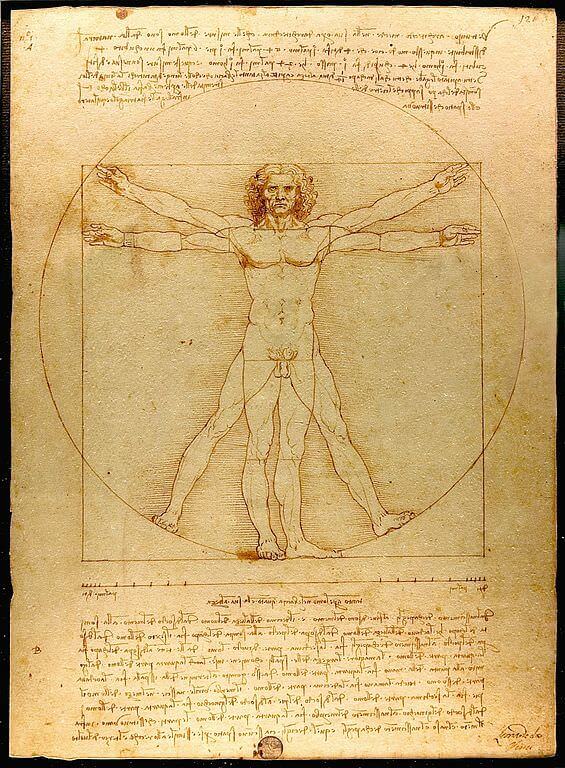
Anthropology, a scientific method for measuring human proportions, has roots in ancient Greece. French anthropologist Alphonse Bertillon introduced the concept of Bertillonage, a system measuring body parts to create unique profiles. However, “anthropometry” predates Bertillon and likely first emerged in the mid-19th century. Sir Francis Galton, a polymath and cousin of Charles Darwin, popularised the term, playing a significant role in statistics, genetics, and eugenics. Their work laid the foundation for the systematic measurement of human physical characteristics.
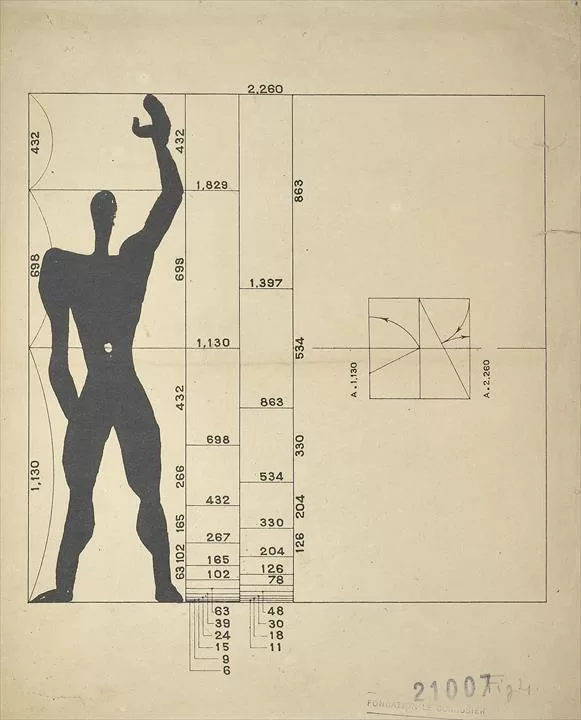
Anthropology plays a crucial role in architectural design, guiding the harmonious relationship between the built environment and human form. Originating from the Greek words “anthropos” (human) and “metron” (measure), anthropometrics studies the dimensions and capabilities of the human body. It dictates that structures should adapt to the contours of the human body, reversing roles and making edifices accommodating partners in daily life. Anthropology is not just a set of measurements; it is a narrative woven into design philosophy, ensuring comfort, functionality, and aesthetic appeal when the built environment resonates with human existence.
Anthropometric Applications in Architecture
1. Ergonomic design

Ergonomic design in architecture heavily relies on anthropometry, which helps create products and environments that accommodate the physical needs and capabilities of users. It determines appropriate dimensions for furniture, workspaces, and seating to accommodate diverse body sizes and provide optimal comfort. Anthropometric measurements inform the placement of objects and controls within reach zones, ensuring accessibility for people with varying mobility levels.
2. Movement
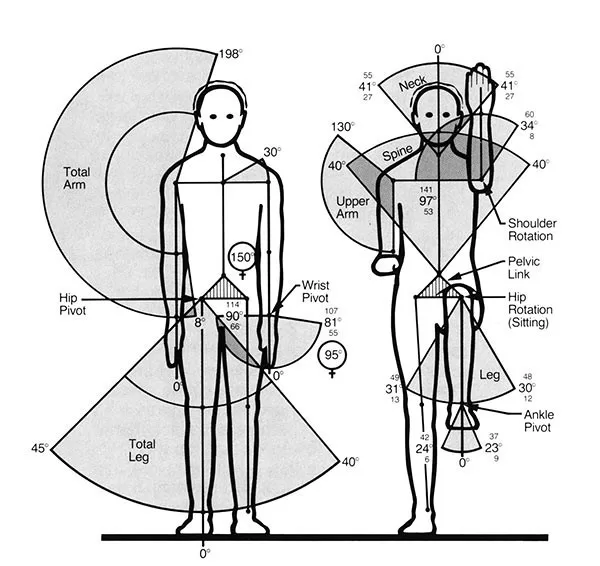
Anthropology architectural design ensures that built environments are tailored to the physical dimensions, movements, and comfort of individuals. Anthropology informs furniture design and placement to create comfortable and functional spaces, ergonomic workspaces, and inclusive environments for all. It guides spatial planning for intuitive navigation, ensuring easy movement through spaces. By integrating anthropometric considerations, architects contribute to a positive and user-centric experience within the built environment.
3. Spatial planning
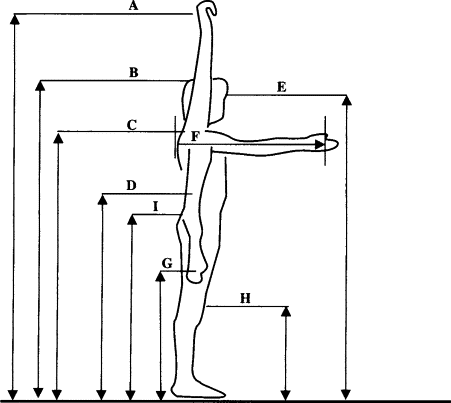
Spatial planning in architecture involves optimising the arrangement of spaces and elements to meet users’ diverse needs and physical characteristics. Anthropology helps determine the appropriate scale of furniture, play equipment, and other elements for different users, ensuring comfort and efficiency for various tasks. Anthropology is a cornerstone of spatial planning, allowing architects to design environments that are visually appealing, functional, and comfortable, ensuring that the spaces they create cater to the needs of the people who will inhabit and use them.
4. Circulation
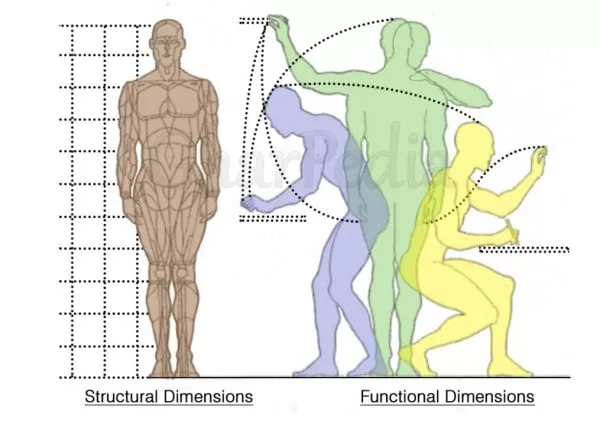
Circulation and flow in architecture refer to the movement of people within a space and the layout to ensure efficient navigation. Anthropometric applications include optimising circulation patterns, creating pathways, and designing spaces that accommodate diverse dimensions and movements. Anthropology is also crucial in designing corridors, doorways, staircases, elevators, traffic flow, retail store layouts, healthcare facilities, theatres, auditoriums, museums, exhibition spaces, outdoor pathways, and residential flow to create user-friendly, inclusive, and conducive spaces. This approach enhances the overall functionality and experience within built environments.
5. Digital anthropometry
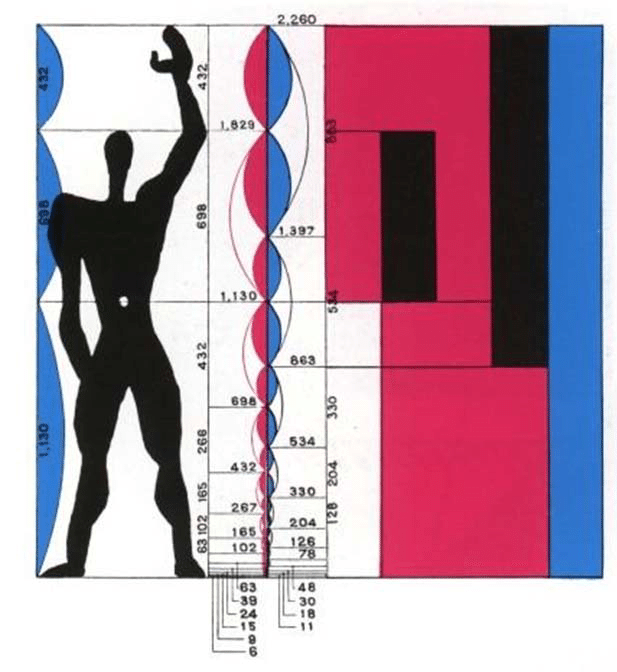
Digital anthropometry is a digital approach that uses 3D scanning, virtual reality (VR), augmented reality (AR), and computational tools to collect, analyse, and apply anthropometric data in architecture. It allows for a precise understanding of human dimensions and integrates them into design. This digital transformation also enhances precision, interactivity, and customisation, leading to more user-centred and responsive built environments. By incorporating digital anthropometry into architectural design, architects create more user-centred and responsive environments that cater to diverse user groups.
Guidelines to be followed in India
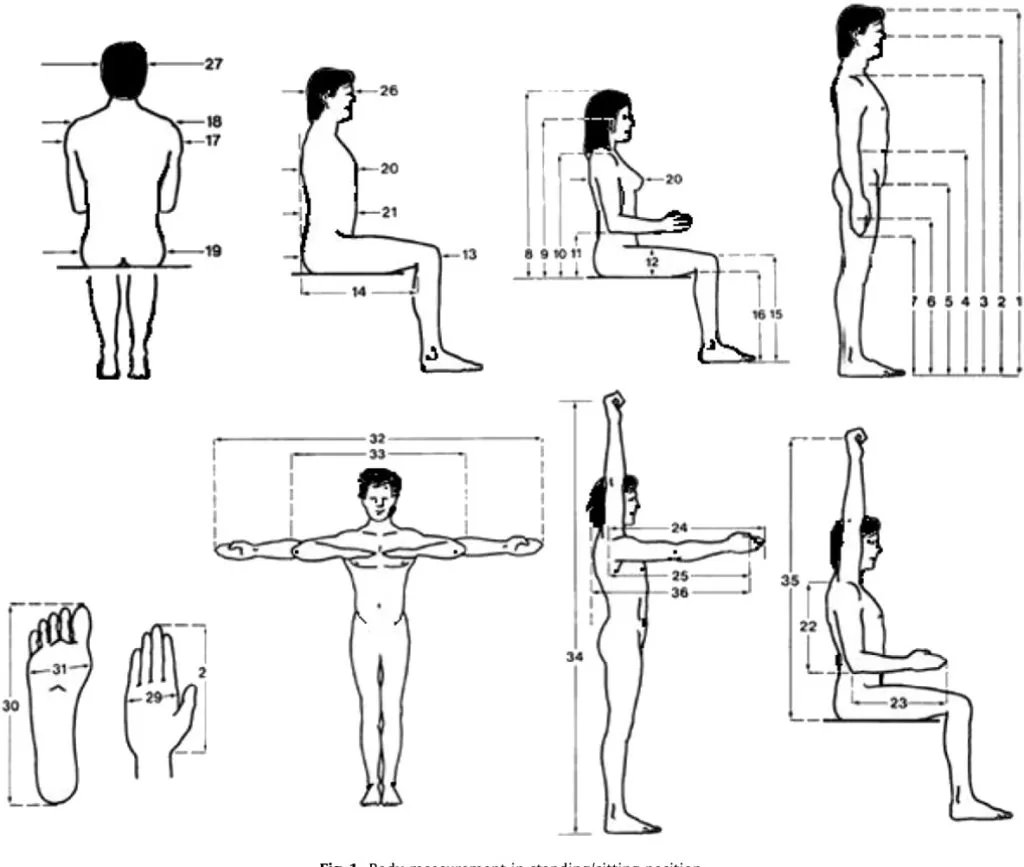
- Ethnicity, region, cultural practices, and socioeconomic conditions are factors that influence Anthropometric dimensions in India
- Nutrition, genetics, and overall health influences the average height of individuals varies across regions and populations.
- Diet, lifestyle, and socioeconomic conditions influence the weight varies across regions and communities
- Cranial dimensions, limbs and extremities, facial dimensions, hand dimensions, and foot dimensions also vary among populations.
- Designers, architects, healthcare professionals, and researchers consider anthropometric data specific to their population to refine these measurements.
- To ensure students’ comfort and attentiveness in schools, classroom furniture design is also crucial.
- Ergonomics and anthropometric considerations are integral across all industries, from healthcare to manufacturing.
- A mandatory aspect of sustaining industry productivity is the ergonomic evaluation of both workers and workplaces.
- Human psychological behaviour and intellectual abilities are influenced by the nature of work and how individuals perceive its importance.
- Apply ergonomics in the healthcare sector to address crucial aspects of workers’ capabilities and limitations.
- Prioritize the consideration of workers’ capacities in the design of medical equipment to mitigate errors and performance issues caused by stress or fatigue.
- Define space as the designated volume for tasks, ensuring smooth human movement without obstacles.
- Acknowledge the relationship between anthropometry and space planning for optimal task performance.
- Genetic, biological, and physiological differences among humans influence variations in body dimensions like height, weight, and shape.
- Observe gender differences in body dimensions, noting that men are generally larger than women, with variations across different measurements.
- Recognize specific differences between men and women in dimensions such as hand size, chest depth, hip breadth, thigh circumference, and skin-fold thickness.
- Consider age-related changes in body dimensions, noting that growth occurs until the early twenties, remains relatively constant until around age 40, and declines in old age.
- Understand that stature reaches full growth at different ages for males and females, and there is a more pronounced decline in stature for women with ageing.
Conclusion
Anthropometry in architecture in Indian anthropometric dimensions is crucial for designers to design spaces for optimal task performance, incorporating diverse measurements influenced by cultural nuances and the rich Indian community. The Guiding Principle of User-centered Design emphasizes that objects, systems, and environments harmoniously dance with users’ physical and mental tapestry. Anthropometry in architecture also acts as a silent architect, crafting spaces and tools that resonate with human comfort and productivity. Moreover, Anthropometry in architecture helps designers create spaces that are accessible to individuals with disabilities, visually impaired, and visually impaired. Advancements in technology, such as 3D scanning and virtual reality, further enhance the understanding and visualization of human interactions with the designed environment.
Content Writing And Research By: Ar. Priyanshi Shah
The post Anthropometry in Architecture: Unlocking the Secrets of Proportions appeared first on The Architects Diary.




No Comments